Enjoy your tea: 10 myths that get in your way
Tea is a wonderful drink, with at least 3,000 varieties on the market. It’s inexpensive, with as wide a range of flavors as wines. Enjoy its variety and subtleties.
Let’s start again. Just put up with your tea. It can be an awful drink, with hundreds of pretty packages on the supermarket shelf but all very much the same. They are bitter or bland or overloaded with a fruity flowery taste. Tea gets stale easily.
Most of the differences between tea as a pleasure to enjoy versus something wet and warm to tolerate reflect mythinformation: “facts” you take for granted that influence your choices of tea and how you make it.
Myth 1. Tea is too bitter to enjoy
Only if you torture it to death by brewing it too long at too high a temperature, or in a microwave oven. You are generally the cause. So, be the cure. Look after the water and the tea will look after itself.
Here are four firm rules that entirely eliminate bitterness:
Use water that is neutral in terms of acid and alkaline levels. Check your home or office supply to avoid hard water with any taste of minerals. Add a cheap filter.
Heat the water to the temperature best suited to the leaf: high for blacks, lower for greens. The range is from 170-212 degrees Fahrenheit. Greens brewed at boiling point will be nastily bitter. Blacks tepidly heated at the lower end are flat and lacking flavor.
Do not touch the microwave. Treat the microwave oven as a tomb where teas go only to die. The physics of “boiling” water in microwaves are akin to bomb-making.
Just follow some simple brewing times and temperatures, shown in this summary table.
That’s it. If you buy a decent quality tea and follow these rules, it won’t be bitter. But, however fine the tea, you won’t enjoy it if the water works against not with you.
Myth 2. Specialty tea is pricey
Tea bags come in packages of 15, 18, 20, 24, and on up. Tins of tea are typically 100 grams (3.5 oz), and 125 grams (4.1 oz). Loose leaf tea sells in ounces, 30 gram samples (1.06 oz), and kilos (2.2 lbs.) This mishmash makes it bewildering to determine what a tea actually costs.
There is only one useful measure for comparing tea prices: cost per cup. A teabag provides just one cup and whole leaf typically 200 per pound, 12 an ounce.
The cents per cup metric provides a good mental check on comparative costs. Here are useful rules of thumb:
Most tea buyers check out the box or tin first – does this look good? – and then respond not so much to the unit price as the price point – is this in the right range for me?
That’s how you end up paying far more than you should for mediocre tea. Lots more. One of the best known chains typically sell 12 bags of an Imperial English Breakfast for $8.95. Compare that with $25 for four ounces of a fine whole leaf tea. They are two-thirds the price of the mediocre bags: 50
cents versus an absurd 75.
The less you pay for a tea that you really enjoy, the more of it you can afford.
Myth 3. Anyone will enjoy tea bags just as much as loose whole leaf
Tea bags make for uninteresting teas. Today’s production is as streamlined as the mass manufacturing of, say, plastic cutlery or ball point pens. What a supermarket wants on the shelf is a product with a consistent and standardized taste, from a reliable supplier, at a competitive cost. These machines make sure they get it; they do just about everything.
Loose leaf tea can’t meet these “everything” priorities. This is basically an issue of chemistry and technology. The barrier between the tea and the water in which it is dunked changes the possible reactions. Standard bag material is a combination of varying grades of cellulose paperish stuff and food quality plastic. This doesn’t give the leaf space to expand. High grade whole leaf contents are then literally a waste. But low quality dust is ideal.
There’s nothing “wrong” with the teas below, but there’s not much “right” either. They take a proven and entirely natural ingredient, the tea leaf, and add extras to it that in no way improve its taste. The “natural” flavorings are misnamed and largely overpower the tea flavors. Emulsifiers and starches are there only to make manufacturing easier.
All these teas are marketed as natural, healthy and just “tea.”
Many tea drinkers will say that they really enjoy their regular teabag choice. Great, so why not try a comparable whole leaf? It will be better value in terms of flavor, subtlety, fullness, aroma, “mouthfill” and aftertaste. Could you imagine saying “What I most enjoy about this one is that scent of corn starch?”
The disdain for teabags among experts is often seen as snobbery. It really isn’t.
Myth 4. Green tea prevents and cures illnesses, even if your don’t enjoy it at all
No, it doesn’t. Nor does it make you directly lose weight. The general evidence is that tea is very probably good for your health but there is no reliable proof of its curative or preventive powers.
Scientific research: The record is suggestive but not supportive of claims of specific benefits. There’s a broad consensus that the antioxidants help protect cells and marshal the body’s defenses.
But the conclusions are invariably littered with “may”, “suggests”, “potentially” and the invariable coda of “More research is needed to…” No definitive claim as yet passes basic tests of statistical reliability, replication, predictive validity, or generalizable results.
Medical practitioners: Some medically licensed doctors, nutritionists, gym trainers, etc., are committed to its playing a key role in their “wellness” programs. Here, tea is correlative of health not causative. When a patient loses 50 pounds by drinking green tea daily, the cause is cutting out sugar-laden sodas and snacking.
Tea industry marketing: This is an area of massive misinformation: ignore it all.
The image below is far too typical. It all sounds so positive and so confident.
This is all arrant nonsense and much of it highly irresponsible, especially “prevents dementia” and “prevents food poisoning.” One of the major concerns of modern medicine is that there is not yet even a hint of understanding the dynamics of dementia.
Links between tea and health are very complex. The advice is the same whether you feel that tea is good for your health or just that it is good. Buy the tea you enjoy. If it tastes good and there really are benefits, then you get the best of both features. If the benefits are minor or fictional, you still get a good drink. But when you buy a tea you don’t like only because of the medicinal claims – and the supermarkets and health stores have them in acrid abundance – all you get is a lousy drink. Buy a good one instead.
Myth 5. English tea is really special to buy and enjoy
There is no such thing as English tea. Today, the leading English Earl Grey is processed in Central Europe. The largest brand of English tea is almost all blended and packed in the Middle East, where the ingredients are transported by ship from up to 30 countries. English Breakfast is made in New Orleans with the tea never touching the borders of England. The second largest English tea firm is an Indian company.
The quality of these firms’ teas is purely a function of their organization and capabilities. All source very much the same leaf from the same regions. They process, market and sell them in the same way. There is no aspect of their operations where “English” is meaningful today. Pseudohistory marketing and aristocratic names are vapid claptrap. Royal Palace Duchess of Bedford Black Blend #12 would be exactly the same if were named Chicago Airport Jetlag Jolt. There’s nothing in a fancy name or package to enjoy as extra treat. Never pay extra for any tea because of something in the name is English Heritage. English tea was a supply chain revolution not a tea renaissance.
Myth 6. “Natural” and “organic” are best choices
All tea is “natural.” It should naturally be “organic.” Alas, these two simple words are not quite what they imply. Natural means found in nature, like common food boosters such as wood pulp and soy lecithin. Some Earl Greys are flavored with natural ethyl glycol: antifreeze.
“Organic” is more meaningful. The problem is that the label costs time and money to obtain, with a complex certification process and frequently large fees. Many of the best growers cannot afford this.
So, yes, organic tea should be your preferred choice, and you certainly don’t want to buy unnatural tea. But organic is not merely a matter of labeling. It’s the full biodynamic fusion: terrain, soil and bush replenishment, and growing and harvesting methods,, especially in avoiding chemical pesticides.
This is a characteristic of the pedigree of a region, terrain, Artisan harvesting and processing, grower reputation, and tea name identity. Find a reliable supplier of whole leaf teas.
Myth 7. Green teas have the least caffeine
On average, sort of. Well, not really. Don’t accept as a reflex response the fallacy that the darker the tea the higher the caffeine. Conversely the paler its leaf, liquor and lightness of taste, the less the caffeine. Not so.
Here are two first rate teas: one very high in caffeine and the other low: a black China Keemun that is medium-full in taste and a Silver Needle white that is exquisitely delicate and as light as a tea can be without becoming watery in taste.
Silver Needle: white, light, delicate. Keemun, black, full, robust
It’s the white tea that’s caffeine-packed, three times higher than the black Keemun. That reflects the springtime freshness and fullness of the buds plucked from the very tip of the bush, with none of the lower leaf selected.
Caffeine: a short briefing
The scientific consensus is that a daily intake of up to 300 milligrams has no negative medical impacts. People at risk from heart problems, pregnant women and nursing mothers should obviously avoid it entirely, however. Caffeine consumption in the US is below 250 mg for all age groups.
Tea has around a third the caffeine per cup of coffee: 20-60 milligrams versus 60-120. Most people can drink ten to twenty cups a day before you hit the recommended and conservative limit of 400 milligrams.
“Most” doesn’t mean all, of course, but the scare mythologies about caffeine make it sound far more dangerous than it is. The general rule of thumb is that 3-4 cups of coffee add up to the daily safe caffeine dose. How about four cups of tea instead, maybe a morning black sensibly brewed for 3-4 minutes (30 mg), a mid-morning oolong (30 mg on average), an afternoon green (20 mg) and mid-evening take your pick (say, 20 mg)? That’s 100 milligrams.
Myth 8. Most tea comes from China and India
China and India are the world’s largest producers of tea, accounting for half the global total. However, there are around 40 countries growing, consuming and exporting it. Mass market teas are mainly machine-processed and from Africa, especially Kenya, Malawi, and Uganda, from Argentina and from lowlands in Asia, such as Malaysia, Vietnam, and Bangladesh.
Almost all the world’s finest tea comes from highland regions. (Assam is the notable exception, though most of its tea is now machine-processed.) Here’s a broad summary of the distinctive strengths and weaknesses of the major producer countries.
China: Inexhaustible variety of outstanding artisan teas, but also of mass farmed commodity leaf. Find a reliable supplier.
India: Best first choice for black teas.
Kenya: Little of distinction. Largest exporter, robust ingredient for English Breakfast style tea bags.
Sri Lanka: Known as Ceylon teas (old colonial name). Some stunning black teas. Excellent whites.
Indonesia: Several distinctive blacks, so-s0 overall.
Argentina: Avoid. Lowest end machine mulch for iced teas.
Japan: Stunning greens, limited exports. High priced.
Taiwan: Becoming the very best for oolongs.
Nepal: Fast-developing, many of the best bargains.
Myth 9. You can store tea in the fridge
The simplest way to wreck a good tea is to do nothing and just stick it anywhere. It is hard to exa ggerate just how dynamic and absorbent tea is. That is the very basis for flavored teas like Earl Grey or the much subtler jasmine greens. There, the odors are delicate aromatics, but teas absorb onion smells as readily as lavender.
ggerate just how dynamic and absorbent tea is. That is the very basis for flavored teas like Earl Grey or the much subtler jasmine greens. There, the odors are delicate aromatics, but teas absorb onion smells as readily as lavender.
The rules for storing tea are simple but absolute: no light, heat or air. Follow them and your tea will keep fresh and full of flavor for a good six months and even a year. Tea absorbs just about anything in the air, especially moisture, heat and aromas.
Storage is simple but vital. Tins. With tight lids. A dark shelf away from heat. Pick from among the many bright and functional designs available in any tea outlet.
Myth 10. Tea is best to enjoy with milk and sugar
Adding milk doesn’t seem to affect the tea itself but it does inhibit the body’s absorption of polyphenols. Tea relaxes blood vessels, tea with milk doesn’t. Milk is a minor concern and you should decide based on personal enjoyment. It’s worth checking though if you include milk as habit rather than choice; try going without it for a few cups.
Sugar is a much more complex issue. The issue for tea drinkers is should they now do without it in general, and can they? The health risks are well-known and growing in severity.
The average daily consumption of sugar per capita in the US is around 120 grams. Germany is second at 100. The WHO’s recommendation is 50 grams per day, making the US two and a half times above the comfortable limit.
The bottom three countries have an obesity rate of about 2%. The US one is 35%. There is a remorseless correlation between sugar and diabetes. The question is not should you add sugar to your tea but should you add sugar?
Liberate your choices; enjoy the exploration
All these myths and misconceptions lead to paying too much for not very good bags and blends, brewing them for too long and at the wrong temperature and being misled by marketing myths and hype.
Here is a summary checklist/reminder of the myth, reality and response. Enjoy, explore and enjoy even more teas. You will never exhaust the options.
Two final points in favor of demythologizing your own perceptions:
You can do better; even if you like your tea bags, avoid green tea, or don’t bother measuring temperature or time, you open up new options in every area of taste, variety, price, aroma, caffeine, healthiness, freshness, smoothness, sweetness and overall satisfaction.
It’s all about the leaf, not the package, marketing, additives, flavorings and price.
Tea Market
Get More Value from Your Tea: BRU Maker One
+41794574278
Jacque's Organics
(647) 804-7263
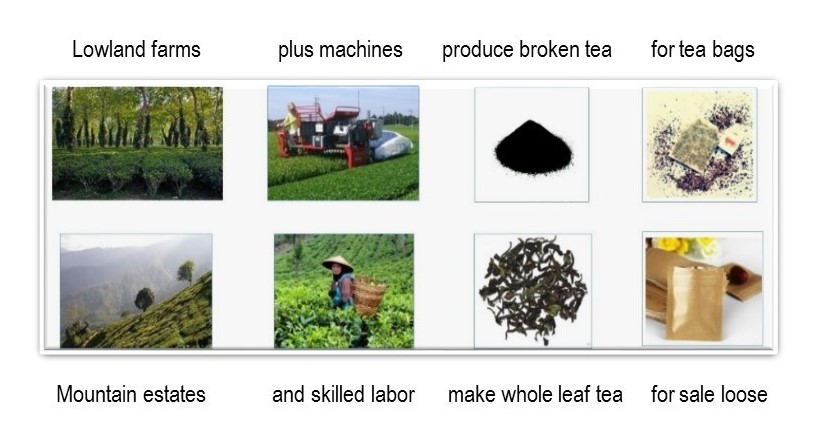

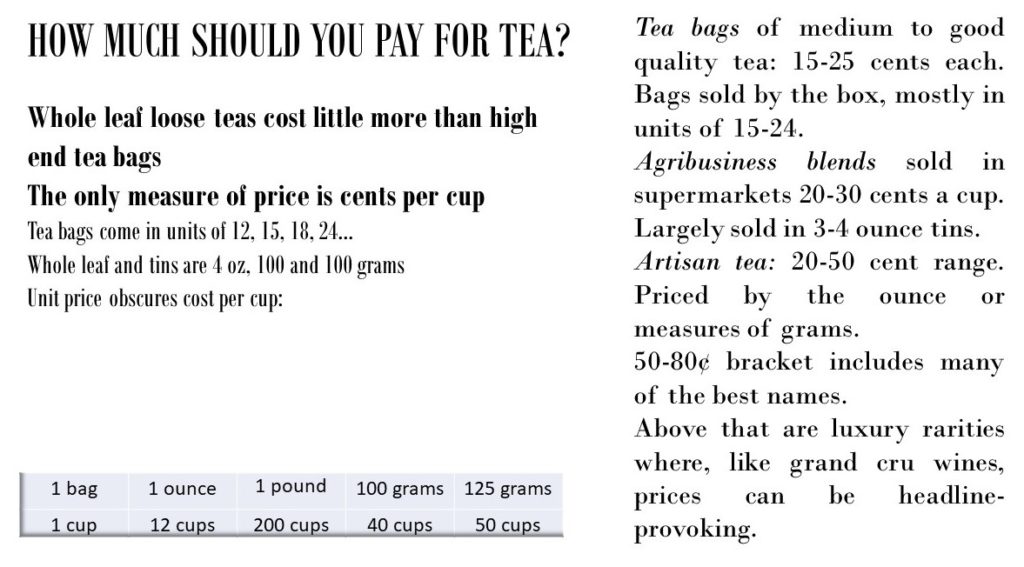

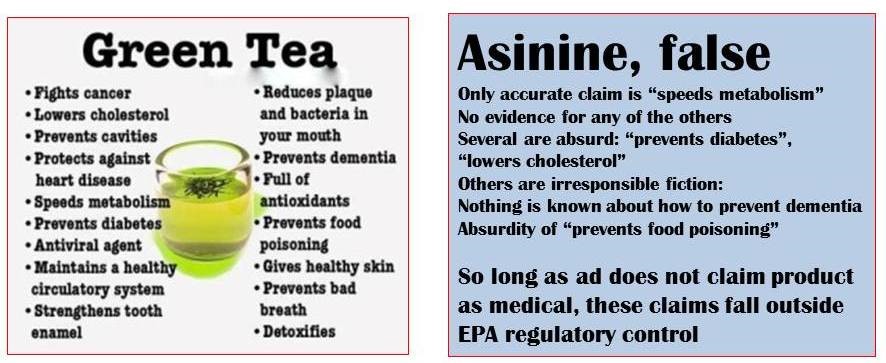
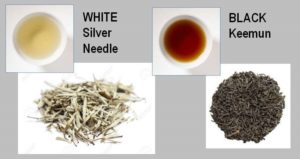
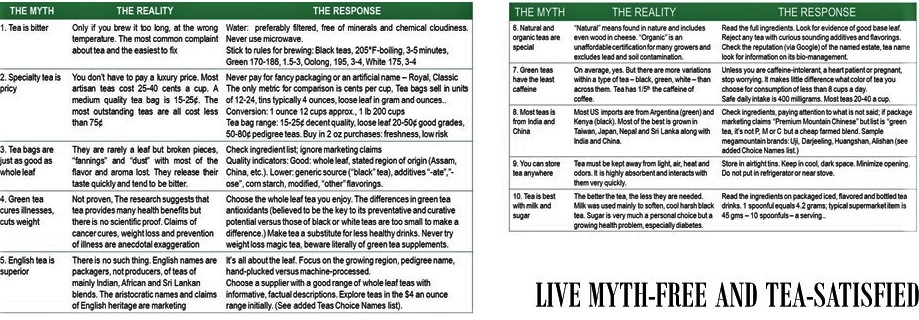
After 30+ years in the tea business I have never read such utter garbage in my life until I read the above article. Frankly the writer is in the “Foodbabe” category with respect to intelligent and informed research and discussion.
To promote your own (preferred) products and styles of tea you regard as higher quality is one thing but you don’t actually need to trash other sectors of the same industry by telling lies about them.
Please do the industry a favor: go away, research your article properly and then update it without the snide, psuedo-sensationalist, inaccurate garbage included above.
Jem was not specific as to which facts put forth were inaccurate but several readers expressed concern that the article mentions that Earl Grey tea flavoring is made with a chemical used as antifreeze. Here are the facts: Propylene Glycol is found in many processed foods, thousands of cosmetics, and in some medications.
The chemical is used to keep these products from drying out. Propylene Glycol also disperses flavoring evenly which is why its approved uses include Earl Grey flavoring. It should not be confused with Ethylene Glycol, a toxic compound that is also used as antifreeze.
Here is additional background and some research articles on the topic.
Propylene Glycol: The Complicated Additive with Potentially Dangerous Side Effects
http://specialteacompany.com/product/almond-j-black-tea/
Natural flavors and essential oils in tea
http://www.tching.com/2010/11/natural-flavors-and-essential-oils-in-tea/
Earl Grey Tea Flavor Concentrate (product description)
http://www.theflavourist.com/earl-grey-tea-flavor-concentrate/
Earl Grey Creme Blends (ingredients listed by manfacturer include propylene glycol)
http://www.thefrozenbean.com/products/42/creme-blends/earl-grey
Earl Grey Decaf (note propylene glycol was used until 2016 then replaced with an organic compliant flavoring by supplier)
https://teaatthewhitehouse.com/products/earl-grey-decaf
Earl Grey Tea Flavor Concentrate (product description by manufacturer includes Propylene Glycol)
https://wizardlabs.us/earl-grey-tea-flavor-concentrate-by-tfa-4oz
Earl Grey Tea (ingredients listed by manfacturer include Propylene Glycol)
https://www.bestglycol.com/en/product/earl-grey-tea/
Earl Grey Tea Flavour (ingredients listed by manfacturer include Propylene Glycol)
https://www.chefsflavours.co.uk/perfumers-apprentice/3131-earl-grey-tea.html
Earl Grey Coffee and Tea Flavoring (manufacturer lists Propylene Glycol as ingredient)
https://www.naturesflavors.com/natural-coffee-and-tea-flavoring/62854-earl-grey-coffee-and-tea-flavoring.html
Earl Grey Tea Flavored Flavor Liquid Concentrate (manufacturer lists Propylene Glycol as ingredient)
https://www.rainbowvapes.co.uk/products/earl-grey-tea-flavoured-flavour-apprentice-liquid-concentrate
Steam Spirit Vapor (manufacturer lists Propylene Glycol as a non-flavor ingredient)
https://www.steamspiritvapor.com/earl_grey_tea_flavored_concentrate_p/earl-grey-tea-flavor.htm
A useful review Peter, but rather cynical on the science. See e.g. “The Green Tea Book”, 1998 – some 150 scientific papers. Then the work of Y Hara since then. MANY times as much evidence as any other foodstuff with evidence on ant-oxidants. Black has about 80% the health values as Green, so never mind pushing green. Agree on the pretensions of the tastes – irrelevant to the health. I drink loose-leaf black straight in the mug: VERY strong and tasty, and the dregs go easily onto pot-plants! On Price? Bear in mind the price has hardly changed in 30 years – the producer is being shafted. The consumer wins. Chemicals – the consumer demands certification of being clean – with no extra cost!
And, Tea is the world’s MOST ecologically sustainable crop – APPRECIATE!